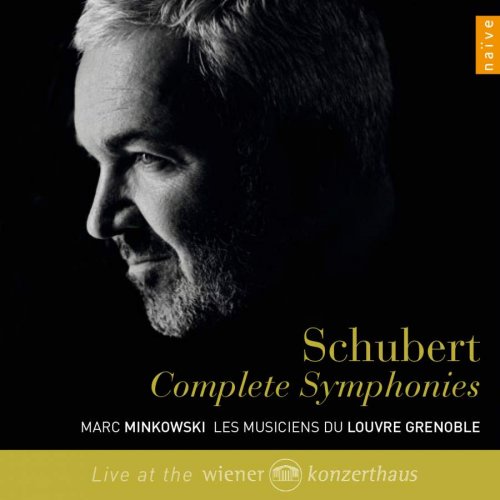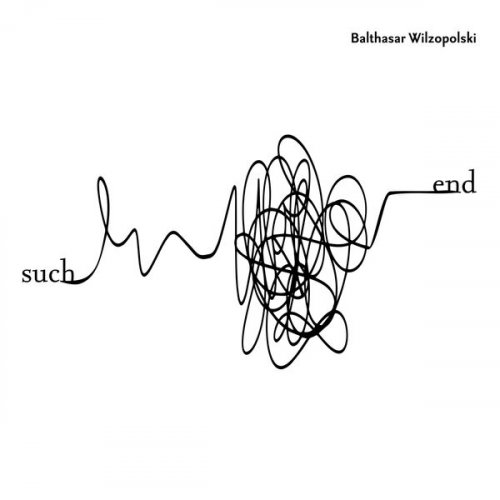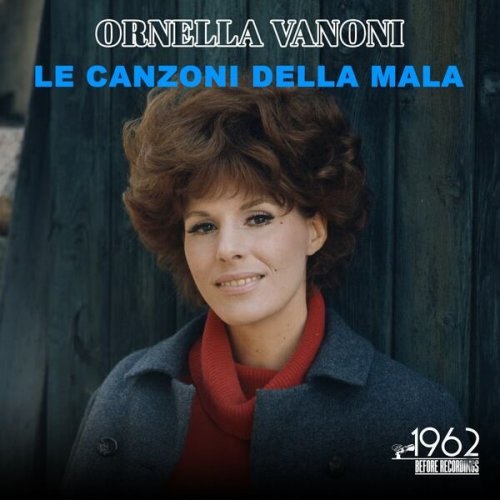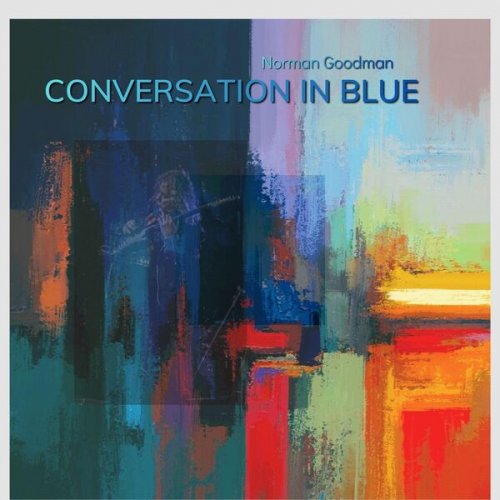Marc Minkowski - Schubert: Complete Symphonies (2012) [Hi-Res]

Artist: Les Musiciens du Louvre Grenoble, Marc Minkowski
Title: Schubert: Complete Symphonies
Year Of Release: 2012
Label: Naive
Genre: Classical
Quality: FLAC (tracks) [48kHz/24bit] / FLAC (image + .cue, log, scans)
Total Time: 4:07:19
Total Size: 2.47 GB / 1.06 GB
WebSite: Album Preview
Tracklist:Title: Schubert: Complete Symphonies
Year Of Release: 2012
Label: Naive
Genre: Classical
Quality: FLAC (tracks) [48kHz/24bit] / FLAC (image + .cue, log, scans)
Total Time: 4:07:19
Total Size: 2.47 GB / 1.06 GB
WebSite: Album Preview
Franz Peter Schubert (1797 – 1828)
Symphonie No. 3 in D major, D 200
1 Adagio maestoso - Allegro con brio 9:06
2 Allegretto 4:30
3 Menuetto. Vivace 3:34
4 Presto vivace 6:22
Symphonie No. 1 in D major, D 82
5 Adagio - Allegro vivace 8:25
6 Andante 7:56
7 Menuetto: Allegro 4:17
8 Allegro vivace 5:59
Symphonie No. 2 in B flat major, D 125
9 Largo - Allegro vivace 10:10
10 Andante 7:32
11 Menuetto: Allegro vivace 2:48
12 Presto vivace 5:30
Symphonie No. 5 in B flat major, D 485
13 Allegro 7:13
14 Andante con moto 9:49
15 Menuetto: Allegro molto 5:03
16 Allegro vivace 7:05
Symphonie No. 4 in C minor 'Tragic', D 417
17 Adagio molto - Allegro vivace 9:40
18 Andante 9:19
19 Menuetto: Allegretto vivace 3:11
20 Allegro 7:24
Symphonie No. 7 (8) in B minor 'Unfinished', D 759
21 Allegro moderato en si mineur 15:09
22 Andante con moto en mi majeur 11:34
Symphonie No. 6 in C major 'Little C major', D 589
23 Adagio - Allegro 9:08
24 Andante 5:29
25 Scherzo: Presto 6:07
26 Allegro moderato 10:00
Symphonie No. 8 (9) in C major 'Great C major', D 944
27 Andante - Allegro ma non troppo 16:49
28 Andante con moto 14:31
29 Scherzo: Allegro vivace 11:54
30 Finale: Allegro vivace 11:29
Following the extremely successful recording of Haydn complete London Symphonies released in 2010, Marc Minkowski, Naïve and the Wiener Konzerthaus set up a new project, even more ambitious although similar in form: to perform for the Viennese audience and record the complete symphonies of Schubert in the same week, in March this year. 2012 marks the 30th anniversary of Les Musiciens du Louvre Grenoble. Major concerts will take place in Paris this Autumn to celebrate this event.
This 4-CD set on period instruments sheds a new light on all the Symphonies, some not as highly considered as perhaps they should be.
Les Musiciens du Louvre Grenoble use instruments of the Classical era, laid out according to Viennese tradition, with the violins on either side of the conductor and the double basses in a line facing him. The oboe too is of Viennese manufacture: its highly idiosyncratic bore produces a sound, at once nasal and tender, that is immediately recognisable – indeed, despite developments in instrument making and the multiplication of keys, the modern version of this instrument is still not so very far removed from the oboe that Schubert knew. Four double basses are used in general but only two for the Fifth Symphony, which is written in a more central tessitura and dispenses with clarinets, trumpets, and timpani.
‘In the “Great C major”, on the other hand,’ explains Marc Minkowski, ‘Schubert’s ambitions recall, relatively speaking, those of Haydn in The Creation or Beethoven in the Ninth Symphony. That’s why I chose to deploy five basses and to double the first flute and oboe parts and the second clarinet and bassoon parts: the use of three instruments per section allows us to obtain that organ sonority that was later to define the Bruckner rchestra, whereas the woodwind, in the early symphonies, sound like a pastoral group. When all is said and done, the key word for all this music is melancholy, even at the height of virtuosity – and goodness knows that these works, more ideal than practical, remain behind their apparent simplicity very risky to bring off in performance. Schubert wrote with genius for the orchestra, but his thought, much more than that of Mozart or Beethoven, was situated outside reality, in the tumultuous imagination of a young – sometimes very young – man, at the frontiers of the possible.’
This 4-CD set on period instruments sheds a new light on all the Symphonies, some not as highly considered as perhaps they should be.
Les Musiciens du Louvre Grenoble use instruments of the Classical era, laid out according to Viennese tradition, with the violins on either side of the conductor and the double basses in a line facing him. The oboe too is of Viennese manufacture: its highly idiosyncratic bore produces a sound, at once nasal and tender, that is immediately recognisable – indeed, despite developments in instrument making and the multiplication of keys, the modern version of this instrument is still not so very far removed from the oboe that Schubert knew. Four double basses are used in general but only two for the Fifth Symphony, which is written in a more central tessitura and dispenses with clarinets, trumpets, and timpani.
‘In the “Great C major”, on the other hand,’ explains Marc Minkowski, ‘Schubert’s ambitions recall, relatively speaking, those of Haydn in The Creation or Beethoven in the Ninth Symphony. That’s why I chose to deploy five basses and to double the first flute and oboe parts and the second clarinet and bassoon parts: the use of three instruments per section allows us to obtain that organ sonority that was later to define the Bruckner rchestra, whereas the woodwind, in the early symphonies, sound like a pastoral group. When all is said and done, the key word for all this music is melancholy, even at the height of virtuosity – and goodness knows that these works, more ideal than practical, remain behind their apparent simplicity very risky to bring off in performance. Schubert wrote with genius for the orchestra, but his thought, much more than that of Mozart or Beethoven, was situated outside reality, in the tumultuous imagination of a young – sometimes very young – man, at the frontiers of the possible.’


![Tomasz Stańko - Zamek mgieł (Polish Radio Sessions vol. 3/6) (2025) [Hi-Res] Tomasz Stańko - Zamek mgieł (Polish Radio Sessions vol. 3/6) (2025) [Hi-Res]](https://www.dibpic.com/uploads/posts/2025-12/1765795906_cover.jpg)


![Koldo Munné & 1520's Ensemble - Live at Jamboree Live Music (2025) [Hi-Res] Koldo Munné & 1520's Ensemble - Live at Jamboree Live Music (2025) [Hi-Res]](https://www.dibpic.com/uploads/posts/2025-12/1765846749_ck2b0xbsb8jna_600.jpg)
![Zamballarana - Sirena (2025) [Hi-Res] Zamballarana - Sirena (2025) [Hi-Res]](https://www.dibpic.com/uploads/posts/2025-12/1765620486_bhmusoyvnhizd_600.jpg)

